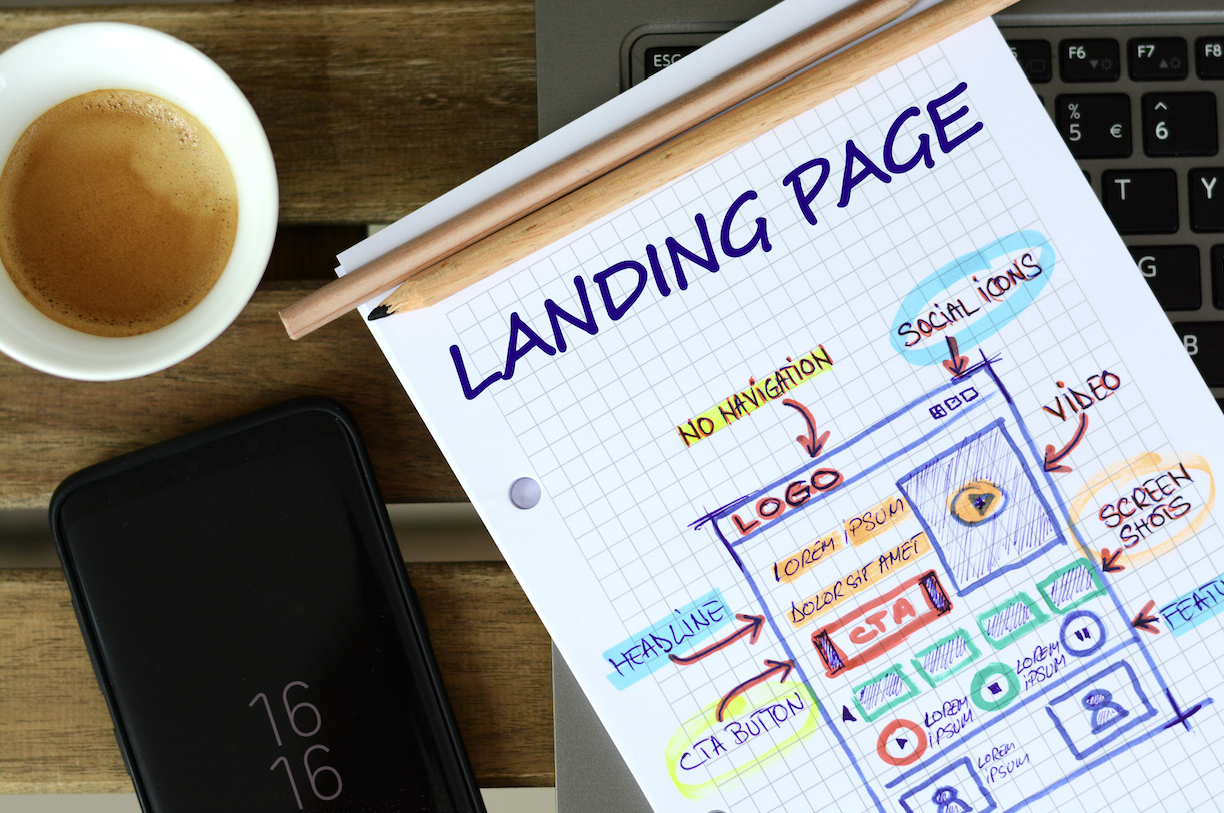
Yusuf Shurbaji
August 10, 2023
|
7.5
min read

A high-converting landing page is an essential part of any digital marketing campaign. Landing pages are designed to convert visitors into customers by providing a targeted and compelling message that resonates with the audience. However, creating a page with a high conversion rate takes knowledge and skill.
Here are a few key factors to keep in mind when creating a great landing page design, and how Prismfly can help.
Creating a high-converting landing page is crucial, but can seem complicated. Let’s walk through some of the main aspects you’ll want to nail down.
The header is the first thing visitors see on your landing page, and it should instantly catch their attention. Your headline is a key landing page element that can either retain visitors or lose them, so make it engaging and persuasive.
Center your headline on your product or service's primary feature or selling point. Write clearly, concisely, and directly to avoid deterring visitors.
Use impactful language that conveys urgency, like "limited-time offer" or "exclusive deal." Including numbers, stats, or data can also boost your offer's credibility and make for a more successful landing page.
Your landing page's call-to-action (CTA) is another important element, as it nudges page visitors to do something instead of just scrolling through. It should guide them to make a purchase, take advantage of an offer, or even just join your email list.
Check out these easy-to-follow tips for an effective call to action:
Your landing page should have minimal distractions that risk steering visitors off-course. Ditch navigation menus, links to other pages, and anything else that takes attention away from the offer.
A clean page helps visitors zero in on main components, like your lead magnet. Embrace white space — with fewer distractions, visitors can fully concentrate on your landing page's central message, boosting the chances of conversion.
Visuals such as images, videos, or graphics are key elements that can help capture attention and convey your message more effectively. Effective landing pages have relevant, high-quality imagery that enhances the user experience.
When choosing visuals for your landing page, consider the emotions and feelings you want to evoke. For example, you can use high-quality images that showcase your product's unique features and benefits or images of your product in use.
Ensure your visuals are optimized for fast loading times, as slow-loading images or videos can lead to a higher bounce rate.

Social proof through customer reviews, testimonials, or endorsements can help build trust and credibility with visitors.
To make your social proof more effective, use real names and photos of customers who have used your product or service (with their consent, of course).
Your unique selling proposition (USP) is what sets your product or service apart from your competitors. It should be prominently displayed on your landing page and be focused on the customer's needs and desires.
Your USP should be clear and easy to understand. It should be stated in a way that resonates with your target audience. Adding social proof in the form of customer reviews or testimonials can help support your claim for credibility.
People are using mobile devices more than ever to surf the web. If your landing page isn't mobile-friendly, you might miss out on potential customers. It's key to make sure your landing page adapts to various screen sizes.
Craft a mobile-responsive landing page with a design that auto-adjusts the layout and elements to fit any device's screen. Ensure easy navigation and readable text, even on tiny screens, and double-check that pop-ups aren't causing a slowdown.
A/B testing, also known as split testing, is a technique used to compare two versions of the same page to see which performs better in terms of conversions. You can do this by changing a single element on the page, such as the headline or CTA button, and then measuring the results.
A/B testing can help you identify what does and doesn’t work so you can make data-driven decisions and improve your page’s effectiveness. With A/B testing, you’ll only test one variable at a time to accurately measure its impact on conversions (versus multivariate testing, which tests multiple components).
A/B testing can help give you the info you need to make decisions that can improve your:
Trust badges, also known as trust seals, are symbols or logos that indicate that your website or business is trustworthy and secure. These badges can help build rapport and credibility with visitors and increase their likelihood of converting.
Trust badges can include industry certifications, security badges, or logos of reputable organizations you're affiliated with. Focus on only using badges that are relevant to your business and recognizable to your target audience.
A defined brand voice is crucial when crafting landing page copy, as it helps create a consistent and memorable brand image that resonates with your target audience. Your brand voice can help build trust and credibility, create a memorable brand image, and build brand recognition.
Revisit your mission statement to grasp how your brand feels to potential customers. Picture your brand as a person — if your brand were a person in real life, you'd probably want them to feel genuine, approachable, and knowledgeable within their area of experience.
Developing a style guide can solidify this and keep everyone in your company on track with visuals and messaging. Pick your brand color schemes, font, mission statement, and commonly used phrasing, and stick with it.
SEO best practices are crucial when creating a landing page. Following best practices helps ensure that your landing page is both visible to and trusted by search engines. Effective SEO can help drive more organic traffic to your page and increase conversion rates.
Some SEO best practices to consider when creating a high-converting landing page include:
SEO best practices are essential for increasing visibility, driving organic traffic, improving user experience, and building credibility. By following SEO best practices, you can ensure that your landing page is optimized, which can help to increase conversions and capture your target audience.

Page load time has a significant impact on user experience. Visitors expect landing pages to load quickly; if it takes too long, they may become frustrated and leave.
Research has shown that even a one-second delay in page load time can result in a 7% decrease in conversions.
If people aren’t sticking around for the page to load, your chances of getting a sale or even an email address are virtually obliterated.
Once a visitor converts, follow up with them to keep them engaged and interested in your product or service. You can do this through email marketing or retargeting ads.
Email marketing allows you to send targeted messages to your subscribers based on their interests and buying behaviors. Provide value in your emails by sharing helpful tips, resources, and offers relevant to your customers’ needs.
Follow-up also provides opportunities to collect testimonials (especially in the form of photo reviews or short videos), from happy customers.
Retargeting ads allow you to show ads to visitors who have previously visited your landing page or website but didn't convert. This can keep your brand top-of-mind and encourage them to revisit your landing page.
Creating a high-converting landing page requires a combination of factors, from a clear and compelling headline, to strong visuals, to social proof, and even page loading time. By focusing on these essentials, you can create a landing page that effectively captures visitors' attention, builds trust, and increases conversion. Additionally, continuously testing and optimizing your landing page can help you achieve even better results over time.
Feeling a little overwhelmed with the steps above? Prismfly can help create a high-converting landing page to help you get closer to the KPIs you’re looking for.
Reach out to find out how Prismfly can help your business soar.

Yusuf Shurbaji
Co-Founder & Managing Partner
Yusuf Shurbaji has over a decade of ecommerce growth experience. His past work includes building optimization departments & running experimentation inhouse and agency side for Dior, JCPenney, LVMH, American Precious Metals Exchange, Princess Polly, Built Brands, Ladder Sport, Maze Group, HelloFresh, Ledger, Blockchain.com, Kind Snacks, and other 9-figure brands. Yusuf is a Co-Founder of Prismfly, a conversion rate optimization agency focused on growing revenue and EBITDA for D2C ecommerce brands. Prismfly is the first CRO focused Shopify Plus certified agency and has seen triple digit growth the past 2 years.
Yusuf Shurbaji





